Can You Freeze Apples? Here’s How to Do This the Right Way
Apples are commonly referred to as Nature’s Original Superfood. This is not far-fetched, as apples have lots of nutritional benefits so much that it is a known saying that “an apple a day keeps the doctor away.”
Apples are not only very nutritious and delicious, but they are also pocket-friendly during the long season (July to November) and perfect for many different dishes: pies, smoothies, salads, and you can even make them into chips.
Can You Freeze Apples?
This is a superfood that I often buy in bulk. This got me one day thinking: can you freeze apples? The answer is yes. Freezing is a great way to store apples and keep them fresh for different uses. Frozen apples will stay fresh for months without going bad, drying out, or becoming bitter.
If you are wondering what is the best way to freeze your apples and how to prepare them for the freezer so they don’t go brown; keep on reading as we have the answers to all your apple questions!

Yes, you can freeze apples. Freezing your apples is one of the best ways to keep them from going bad.
While any apple varieties can be frozen, apples that are hardy with a firm and snappy texture fare very well in the freezer’s extreme cold environment.
The following types of apples will do great in your freezer:
- Jonagold
- Cortland
- Golden Delicious
- Empire
One thing to keep in mind is that frozen apples do change in texture and thus they will not be suitable for snacks, but they are perfect for everything else!
How Long Do Frozen Apples Last?
Apples have different shelf lives, depending on how you’re going to keep them. Here’s a bit of info on how long they’ll be good for:
- The counter will make them have a shelf life of 5 – 7 days.
- The pantry will give them a shelf life of 3 weeks.
- The refrigerator will give them a shelf life of 4 – 6 weeks.
- The freezer will give them a shelf life of 8 months.
As you can see, freezing your apples will lengthen their life considerably, so the answer is that frozen apples last for up to 8 months. Is that enough to convince you to freeze them?
What Is The Best Way for Freezing Apples?
If you feel like freezing apples, then you should know there are plenty of ways you go about this, as you can freeze them as a whole, sliced, pureed, and so on. It really does depend on what you intend to do with them as the best way for freezing apples is the one that suits your needs and storage space.
We’re going to dive in and check out all the different ways the apples can be frozen and how to prepare them for the freezer.
Can Apples Be Frozen Whole?
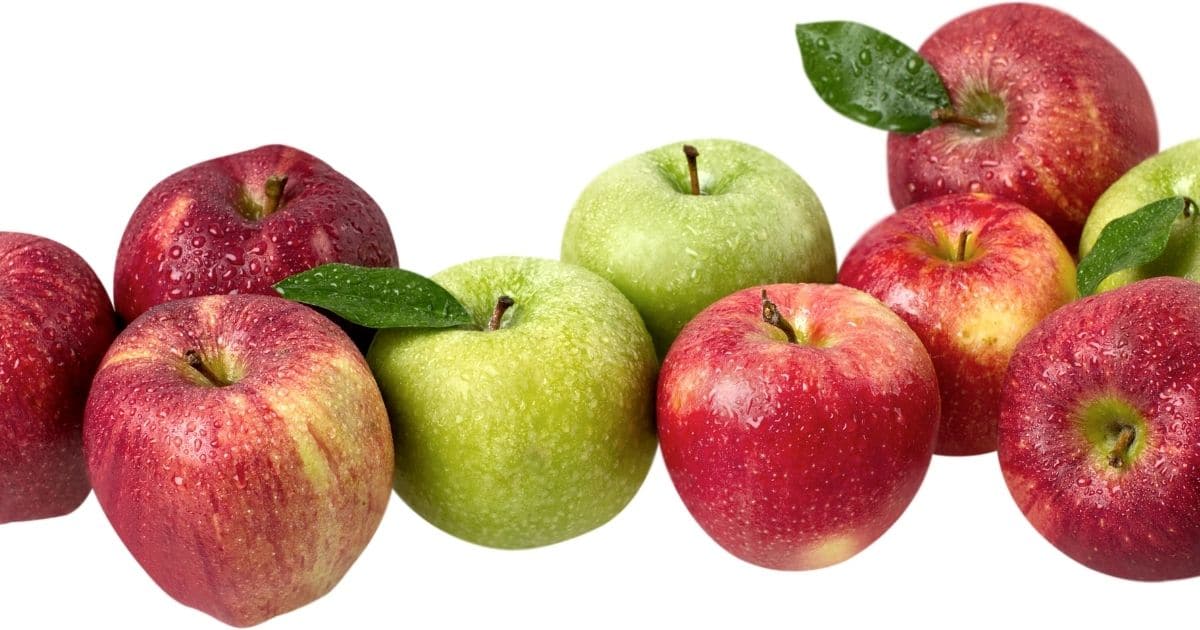
Yes, you can freeze whole apples.
To prevent the apples from turning into products that will not be convenient to use when you take them out, ensure you freeze them separately first.
- Wash your apples thoroughly
- Place them on a baking sheet leaving a little bit of space between the apples. Ensure they do not touch
- Put them in the freezer
- Freeze them for approximately 15 minutes until they are firm to the touch. Do not leave them in the freezer without putting them in a bag for longer than an hour or you run the risk of freeze burn. While freeze burn does not cause health issues, it will make your apple tough and unpalatable!
- Transfer them into freezer bags and put them back in the freezer. This process prevents the apples from freezing up into clumps that will make continuous freezer storage difficult. Clumps also make it difficult to separate and thaw them as need it.
Can You Freeze Peeled Apples?
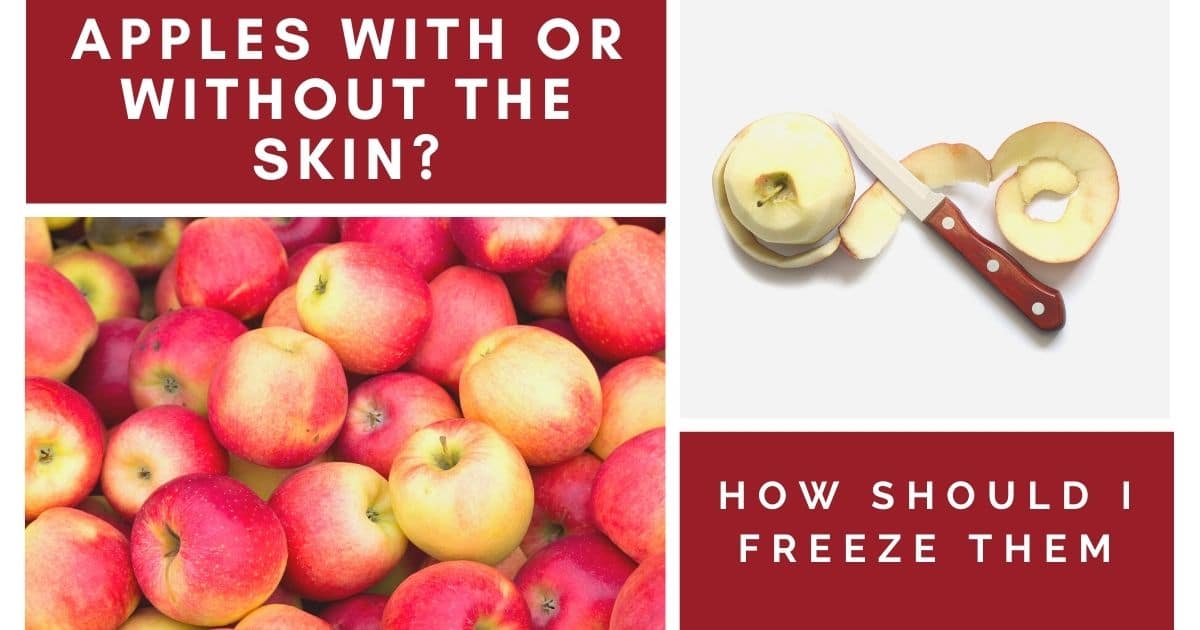
Yes, you can freeze peeled apples easily.
Frozen apples with their skin on can brown quickly once defrosted and thawed, as the skin can bruise very easily.Freezing apples with the skin off may reduce the risk of browning once defrosted and thawed. However, they need to be prepared properly to ensure they do not go brown when cut.
The possibility of browning will largely depend on the processes you put the apples through before freezing. Find a detailed explanation of the processes in the “How do you prepare Apples for freezing” section.
Can I Freeze Apples Without Cooking Them?

Yes, you can freeze apples without cooking them.
You do not need to cook apples before freezing. Instead, you can blanch the apples to prevent them from browning, especially for sliced apple pieces.Blanching is the process whereby food is immersed briefly in boiling water followed by an ice bath.
For a detailed description of blanching, do check out the “How do you prepare Apples for freezing” section.Blanching is encouraged to preserve the colours of sliced apples meant for the freezer.
How to Store Cooking Apples in Freezer?

Cooked apples can be frozen just like all the rest we’ve discussed thus far.
To properly freeze your cooked apples follow the steps below:
- Cook your apples as desired.
-
Leave them to cool down at room temperature.
- Warning: The FDA recommends that cooked foods are not left at room temperatures for longer than 2 hours, as these will induce the natural bacteria from the food to grow at dangerous levels increasing the risk of food poisoning.
- Place them on a baking sheet leaving a little bit of space between the cooked apples. Ensure they do not touch each other
- Put them in the freezer.
-
Freeze them for approximately 15 minutes until they are firm to the touch.
Ensure you do not leave the apples on the baking sheet, without a bag, for longer than 1 hour; or you will increase the risk of freeze burn.
- While freeze burn does not cause a health concern, it will change the flavor of your apples, making them unappetizing.
- Transfer them into Ziploc bags, airtight containers, or vacuumed bags and put them back in the freezer.
- If any of your recipes require spices, do not add them before freezing as some spices lose their flavor when frozen.
- Hence, it’s best to add the spices to your cooked apples at the point of baking, or when you need them.
How to Freeze Cut Apples?

Much like all other methods, you can also freeze raw apple slices. In this way you can store your cut apples in the freezer. Yes you can freeze raw apple slices. While there is nothing wrong with freezing whole apples, especially with the right procedure, it is best to cut apples into slices before freezing. Sliced apples will freeze quicker and thaw easier than whole apples.
Unlike freezing whole apples, freezing raw apple slices has a bit of process to it.Lynne Mclandsborough on The Scientific American explains that when we cut apples, we expose the apple’s natural enzymes to oxygen. Exposure of these enzymes to oxygen cause oxidation of the apple. In other words, your apple will go brown the moment they are cut!
Hence, when you plan to freeze raw apple slices, you need to put a measure in place to prevent browning.
There are two methods to help with this:
- Dunking the sliced apples into lemon juice, salted water, or any ascorbic solution will halt the browning process.
- The other method is blanching the apple slices.
For more information on any of the two methods addressed above, refer to the “How do you prepare apples for freezing” section below.
Once the raw apple slices have been processed to prevent browning, place the pieces on a baking sheet and place them in the freezer for approximately 10-15 minutes until they are firm to the touch. Space the cuts to avoid clumping.
Transfer the slices from the cookie sheet into a ziploc bag, vacuum bag, or airtight container and return to the freezer.
How Do You Prepare Apples for Freezing?
Preparing your apples for freezing is straightforward when freezing whole apples. All you need to do is wash the apples thoroughly to clean them up, pre-freeze on a baking sheet, transfer them into freezer bags once frozen, and then return them to the freezer.
The process is slightly more laborious if you are cutting your apples into slices, this is where it gets tricky because you need to prevent the raw apple slices from browning before freezing.
Below we explore the different ways available to prepare raw apple slices for freezing.
Lemon Juice

- Fill a large bowl with lemon juice and water; one tablespoon of lemon juice to every cup of water. Dip the apple slices in the mixture before freezing.
- Please be aware that this method changes the flavour of the apple.
If the apple is to be used in pies, or any cooked meals, then this process is easy, cheap and efficient. If however, you are to use the apples for smoothies or teas I wouldn’t recommend this method!
Ascorbic Acid

Concentrated vitamin C, commonly referred to as ascorbic acid, works the same way as lemon juice.
- Mix one tablespoon of ascorbic acid in a gallon of water.
- Dip the raw apple slices into the mixture.
You can get ascorbic acid from the canning section of any grocery store, or from the comfort of your home by visiting Amazon.
Salt Water

- In a large bowl of water, fill with enough table salt to cover the bowl’s bottom.
- Drop your apples in the solution as you slice through.
- Once you are done with cutting, drain water out of the bowl and strain the sliced apples.
Blanching

Like the above processes, blanching helps preserve your apples’ colors, preserves freshness, and prevents browning.
- Place raw sliced apples briefly in boiling water for 30 seconds to 60 seconds maximum. Remove the slices and shock them by plunging them into an iced water bath to prevent further cooking.
- Do not leave to sit in the water for too long or they will go mushy. Check regularly to ensure the water remains freezing cold, and to observe if the slices have lost warmth.
- Drain the water and strain your apple slices.
- If you do not mind the slices clumping together place them inside your bag/container and freeze them.
- If however, you want to used them individually; pre-freeze the slices.
- To pre-freeze, your apples, place them on a baking sheet (ensuring the pieces do not touch each other) and freeze them for 10 – 15 minutes. Then transfer them to their freezer-safe bag/container and place them back in the freezer.
Are Apples Still Good If They Freeze?

While freezing apples won’t ruin them, the texture will change.The texture of frozen apples won’t be crispy like fresh apples, but rather strong and snappy.
Hence, you may not get the same satisfaction from eating defrosted and thawed apples compared to fresh apples.
What to Do With Frozen Apples?

Frozen apples, whether whole or sliced, can be used for different recipes:
- Crisps – My kids love this snack and I love to give it to them. Simply cut the apple into thin slices without the skin and freeze them. To ensure they do not go brown follow the procedures in the “how to prepare apples for freezing” section above. Once you are ready to make them into crisps, thaw the slices in the fridge and pat them dry. Then add cinnamon and place them in the oven for 2 hours at 374 °F (190 °C).
- Smoothies – Another winner with my kids. Mix the frozen apples with yogurt and some honey and whiz away.
- Stewed apples – Yum! I love this with ice cream. A nice and quick dessert that will win the heart of all your family. For this, I freeze the apple already stewed. Once you are ready to use them, get the stewed out, put it in the microwave for 15 seconds, and voila, you have your dessert!
- Apple butter – Make the butter and freeze it so it does not go bad. Keep out what you will need to use in 3 or 4 days maximum.
- Applesauce – Great with pork. Make the apple sauce, freeze it, and defrost it by putting it in the fridge the day before you use it!
- Jam – No need to defrost your apples when making your jam.
- Jelly – No need to defrost your apples when making apple jelly
- Cakes and pies – Freeze your apples in slices (for pies) or cut (for cakes), depending on what your intent is. Do not need to defrost them before you put them in the pie or cake.
- Baked apples – Freeze your apples whole. No need to defrost them before baking.
- Tea – Back in the day when I was younger, my grandmother used to make me apple tea. Simply boil the frozen apples in water and apply as much or as little sugar as you want, then drink it hot (or cold). I used to love this tea every time, but it was particularly great to soothe me when I was feeling anxious about my school exams!
Basically, frozen apples can be used for a wide variety of cooked or baked dishes.
What to Do With Apples Going Bad?
If you find that your apples are going bad and no one is eating them, you may want to consider a few options. One of these options is, of course, to freeze them. We’ve already gone through a few ways you can freeze your apples.
Another thing you can do is to juice the apples in your processor. Then, you can freeze the apple juice so you can serve it to your kids, use it while baking, and so on.
Of course, you can also make a bunch of recipes with your apples before they go completely bad. Here are some suggestions of recipes we love:
- Apple Cinnamon Pull-Apart Bread With Vanilla Bean Glaze
- Crescent Apple Pie Bites
- Healthy Apple Muffins with Spiced Crumble Recipe
- Homemade Granola Recipe With Caramel and Apple
- Healthy Baked Apple Oatmeal Recipe
- Fall Caramel Apple and Honeycomb Eton Mess Recipe
Final Thoughts
Apples are a wonderful fruit full of vitamins, and minerals. They are also versatile and super cheap, so not surprising that most of us end up with huge amount of apples during their season.
Well, now there is no need to throw away those extra apples that no one had a chance to eat. Instead, freeze them; whole, sliced, with or without skin, and use them for a variety of cooked/baked meals.
Simply ensure you freeze them properly to avoid them going brown. This is especially true for those apples being frozen cut or without skin.
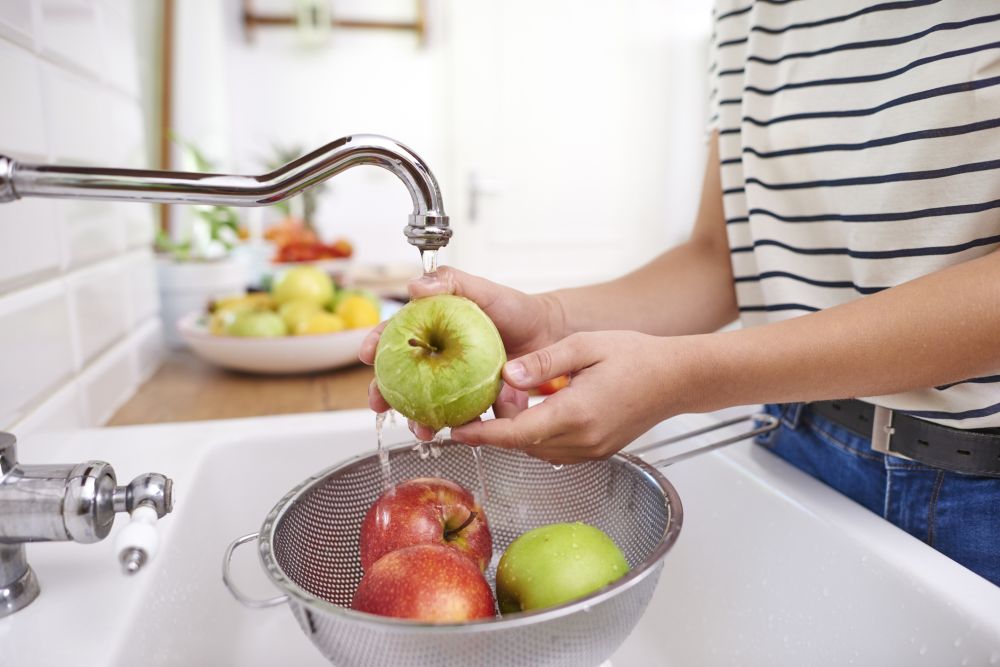
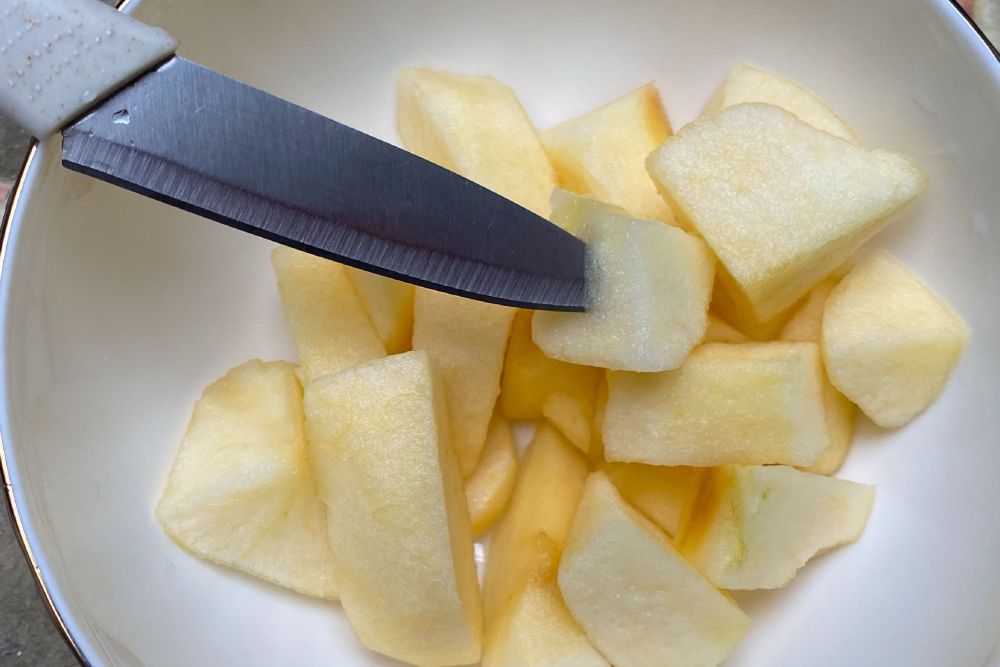
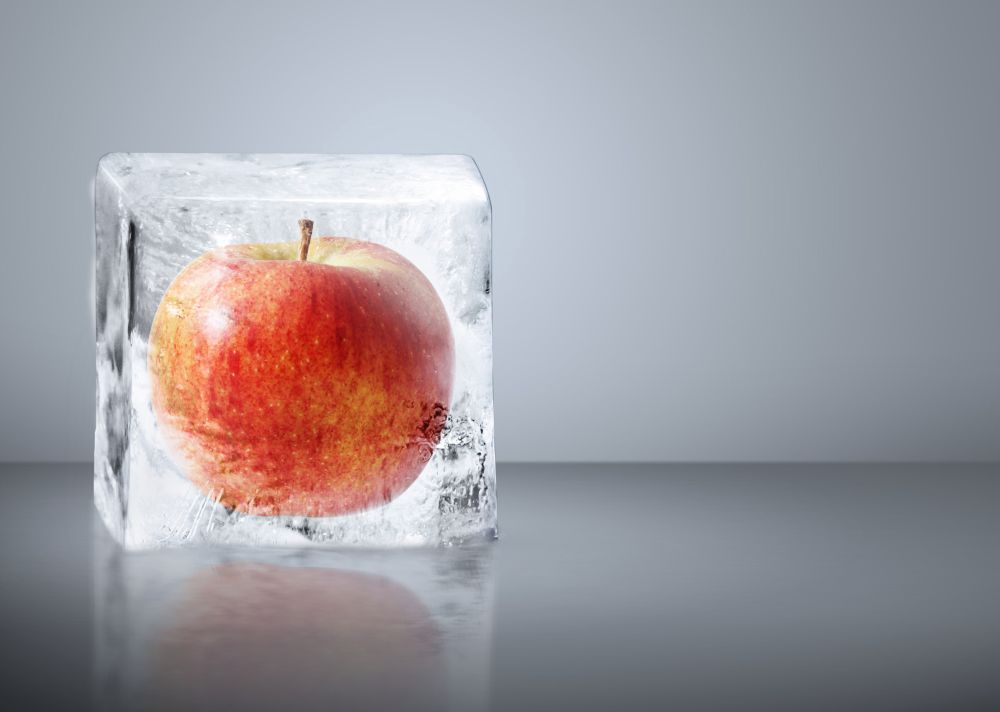
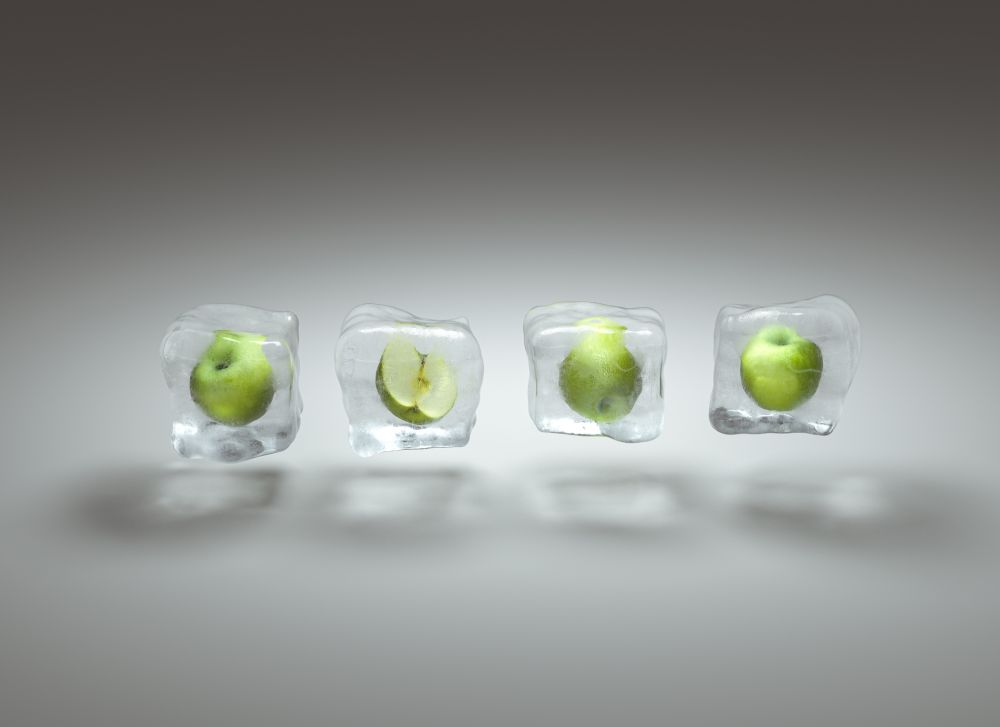
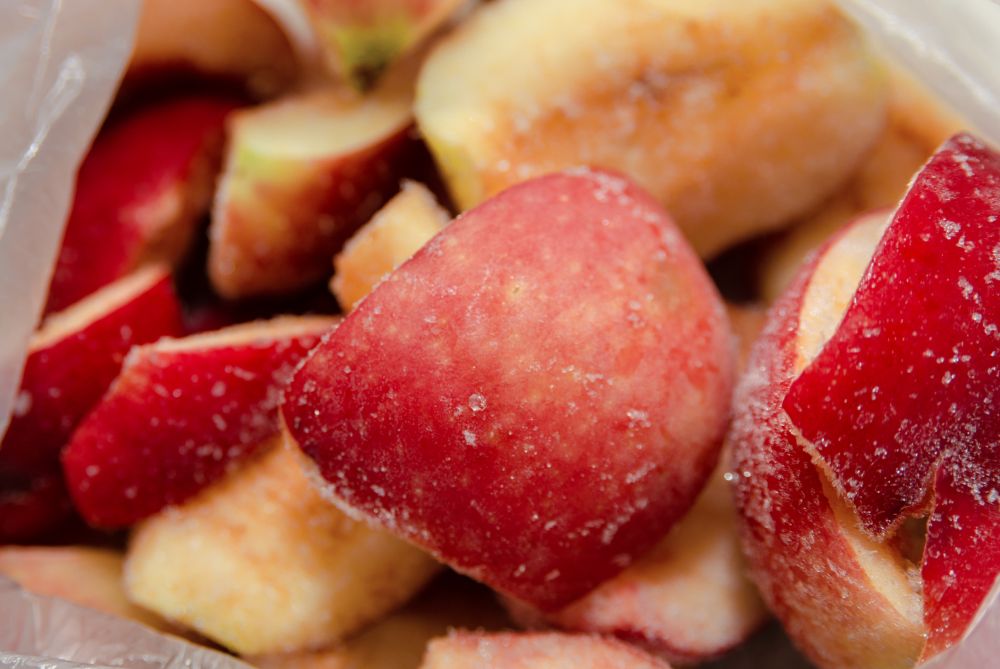
Lots of wonderful information. Thank you!